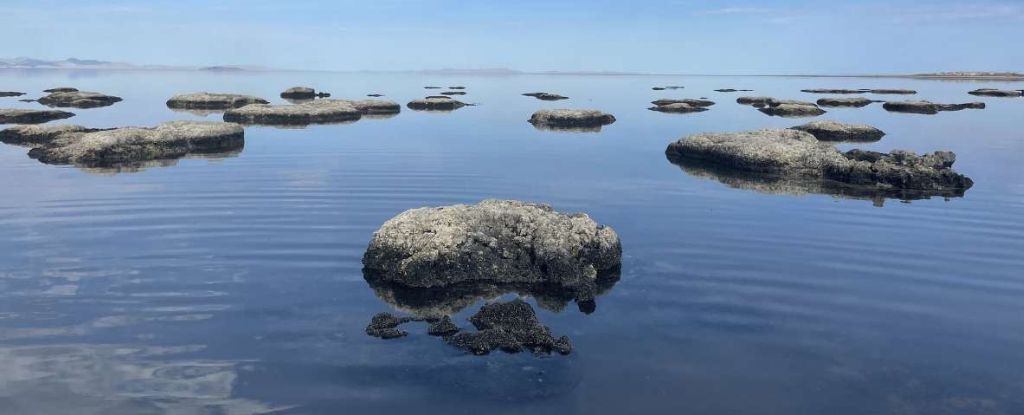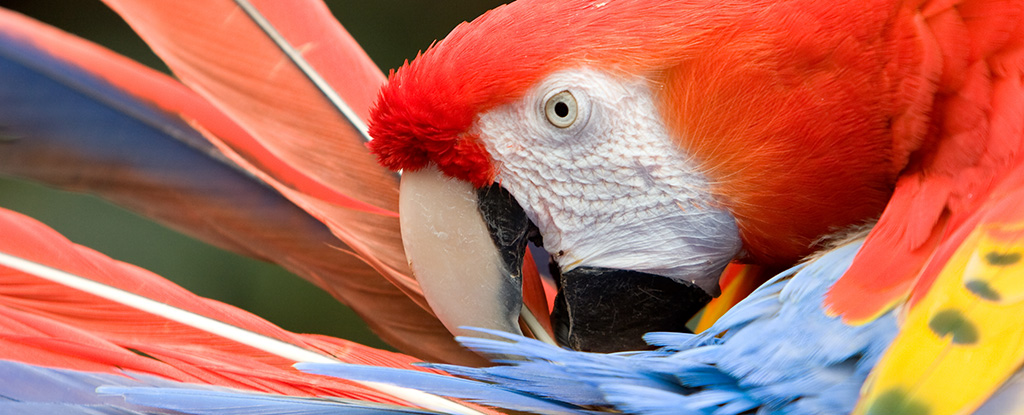For decades, the Great Salt Lake in the United States was thought to officially house just two animals bigger than a cell: brine shrimp and brine flies.
Apart from that, only bacteria and algae had been found in the lake’s ultra-saline waters.
Now, scientists have found a third form of multicellular life that can also stomach an unsavory amount of salt. And it’s been hiding in the lake all along.
Breaking apart clumps of calcium carbonate mud called microbialites, built by microorganisms on the lake bed, researchers at the University of Utah have confirmed what biologists have long suspected: There are worms of various species wriggling under the lake’s surface, away from our sight.
It’s the most saline environment in which nematodes have ever been found. And that’s saying a lot since nematodes live in just about every extreme environment on planet Earth.
Biologists Julie Jung and Michael Werner led the team that discovered the worms. In the spring of 2021, they began a rigorous hunt for the creatures in a spot of the lake that is three to six times saltier than the ocean.
“At first it was just scooping up segment samples. But then once we noticed microbialites, we shoveled little chunks of them, tried to preserve the layers, and brought them back to the lab,” explains Jung.
Where other biologists had failed, Jung and Werner succeeded.
Using a powerful technique to separate macromolecules like DNA, RNA, and proteins, the biologists identified live nematodes at every site they collected samples.
“I’d looked there myself for them, but I didn’t look in the same places… ” says biologist Byron Adams from Brigham Young University, who consulted on the discovery.
“Even today we’re discovering these amazing things about this lake that’s been sitting on our doorstep for 170 years.”
Researchers suspect that these hidden worms are feeding on the bacteria that live in and create these mats. They may also protect the worms from the Sun and from drying out when the lake’s water recedes.
The researchers could not culture the nematodes in the lab, so to figure out how they were surviving, the team turned to the most studied roundworm of all: Caenorhabditis elegans.
In the lab, this creature was fed either E. coli bacteria or the bacteria that live in microbial mats in the Great Salt Lake. The worms were then exposed to the lake’s water, which is 50 times saltier than C. elegans’ usual habitat.
After five minutes, the worms fed on E. coli had perished. But those sustained on microbes from the Great Salt Lake survived for longer than 24 hours.
“We didn’t expect it to work, but it did,” says Werner.
The results suggest that there’s something about this particular diet that allows roundworms in the Great Salt Lake to survive.
Genetic analyses suggest that as many as 80 different nematodes were collected from brackish and hypersaline sites on the lake.
Three are from a genus that lives in marine and coastal sediments. The vast majority of the rest did not match any other known nematode genus or species.
Researchers think these novel worms are unique to the Great Salt Lake, created after a prolonged period of reproductive isolation.
Just as we’ve discovered this new habitat and its novel species, they’re at risk of disappearing forever.
Today, the Great Salt Lake is a shell of what it once was. As water is diverted for human usage and the climate dries out, the banks are receding, exposing microbial mats to the elements, and increasing the salinity of the remaining water. Because of the lake drying out, Werner and Jung had to ditch their kayaks and use mountain bikes to reach a few sites during certain seasons.
Some scientists think the lake has less than five years before the ecosystem collapses completely. Who knows what will happen to its worms at that point.
“There is a pressing need to understand this lynchpin community and the limits of their habitability,” conclude Werner, Jung, and their colleagues.
The study was published in Proceedings of the Royal Society B: Biological Sciences.





